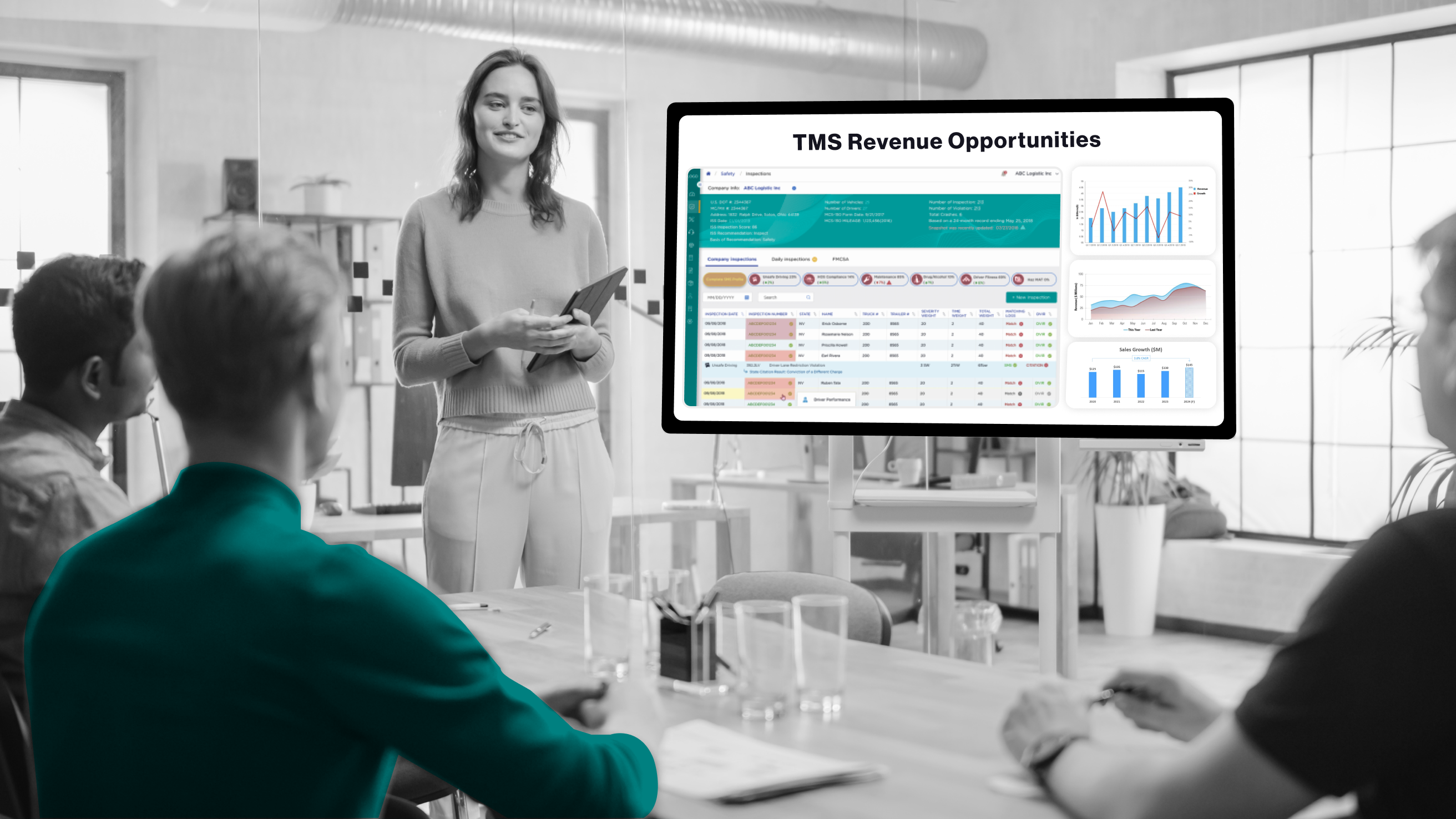
When executives are huddled around the boardroom table talking about how to grow revenue next quarter, there’s a lot of discussion around the current TMS trends. Yes, AI and machine learning are at the top of the list, and there’s also likely talk about new marketing campaigns, or expanding the sales team in a certain geographic region, and maybe there’s even a few off the wall ideas from the new guy.
But there’s one TMS trend that may not have made it to your shortlist yet and that’s adding a freight insurance offering directly within your platform. You’re likely thinking that cargo insurance couldn’t possibly create enough revenue upside to bunny hop the other initiatives that your senior leadership team continues to pitch. But more and more, TMS CEOs are expediting the addition of a cargo insurance offering within their development roadmap because it can make a substantial impact on profitable revenue.
How do I earn revenue from a spot insurance integration?

The details here make the difference. As you know, you can’t earn a commission from the insurance providers. However, there are still various models for TMS platforms to earn revenue from integrated insurance products. Not by earning commissions, but by charging fees. Specifically, by incorporating handling, marketing, and tech fees. Generally speaking, the industry average when it comes to these charges is $0 to $10 per transaction. We’ll circle back to this later.
While a few dollars per transaction doesn’t seem like it would move the needle, it’s important to to think about the possibilities when that compensation is scaled across your customer base.
Let’s do a quick calculation:
Imagine your TMS platform processes about 75,000 loads per month. Now, let’s say you achieve an conservative user adoption rate of 10-15% for the integrated spot insurance feature. For each load that utilizes spot insurance, you can charge a processing fee of $10.The math here is promising. If we take the lower end of the adoption rate, that’s 7,500 loads per month using spot insurance, which translates into $75,000 in additional revenue from fees monthly. Annually, this results in a whopping $900,000 in additional revenue, just from this feature alone. On the higher end, with a 15% adoption rate, your annual additional revenue potential surges to $1.35 million. As a TMS stakeholder, this integrated feature could become a substantial source of added income, enhancing your platform’s profitability while offering a valuable service to your users. It’s a win-win situation that can’t be overlooked.
Some companies may only ship twice a day. Many ship far more. If it’s an e-commerce brand, they may be processing upwards of 50 LTL shipments per day. Also, a portion of your customers are likely freight brokers who have their own customer base, meaning those freight brokers could be processing more than 20 shipments per day. While these rough estimates are subject to market conditions and commodities, you can see how the volume is still certainly there.
Will my customers even value the ability to buy insurance within my TMS?

Your customers fall into one of two categories. Those who are currently buying insurance off-site, and those who are not buying it at all. For those who are not leveraging spot insurance, it’s likely either due to the headache of acquiring it, or they haven’t realized the benefits it has for their company’s growth. For those who are already buying insurance, it’s an obvious win. For the rest, once they understand what this does for them, they will love it. This will be a game changer for brokers and motor carriers. It will allow freight brokers to use whatever motor carriers they want to use and it will allow motor carriers to bid on loads they would not be able to otherwise. Motor carriers won’t have to carry higher annual insurance coverage on their primary cargo policies. Because if only 5% of their loads are over $100k, the average primary cargo limit, they can just buy spot insurance when they need it. Freight brokers will love it because they can upsell it. They will offer it as a value-add to their customers, and can say they will insure the full value of the load.
This TMS functionality is rapidly gaining popularity, emerging as a top trend in the industry. The reasons for its growing adoption become clear when the benefits are assessed: it’s a game-changing feature that saves time and broadens possibilities for businesses.
For many, securing excess cargo insurance is a cumbersome process right now. It requires manual data entry on a separate website, downloading the insurance certificate, and then re-uploading it to the TMS. Integrating spot insurance on your website dramatically simplifies this process.
With a single click during the quoting or booking stages, users can indicate their wish to secure insurance for their shipment. The system automatically fills in their shipment details on the insurance certificate, removing the need for repetitive work. The insurance certificate is then automatically attached to the shipment in the system. This eliminates the lengthy process of manual data entry and document handling, making insurance purchase a swift and effortless process within the TMS platform.
Will my prospects care if they can buy insurance directly within my TMS?

Simply put – yes. More and more, TMS buyers are looking for an integrated insurance solution because they know that it’s available in the marketplace. And it’s climbing in popularity when it comes to the top TMS trends. Why? Shippers have realized how much time an integrated insurance solution could save them when it comes to their typical shipment workflow.
Boasting about having an integrated insurance solution is becoming more and more popular in TMS company sales pitches and in turn TMS buyers are becoming more savvy and expecting it to be baked into the TMS that they choose.
While having an insurance offering can help you stand out in the near term, having it is bound to be table stakes in the future. Choosing to add the insurance offering now can help you capture more customers, and in turn revenue, in the short term, while also protecting your product competitiveness in the long run.
LogistIQ Insurance As A Driver of Revenue
By offering an integrated cargo insurance solution directly in your TMS, you’ll be well on your way to saving your customers time while also capturing new revenue streams.
Contact us today or download our Free TMS Guide to learn more about how LogistIQ’s Freight Insurance Fast for TMS companies has everything you need to provide spot insurance directly within your platform.
How To Move Forward
For Freight Brokers
We will connect you with a qualified agent that best meets your needs.

 1-888-910-4747
1-888-910-4747
